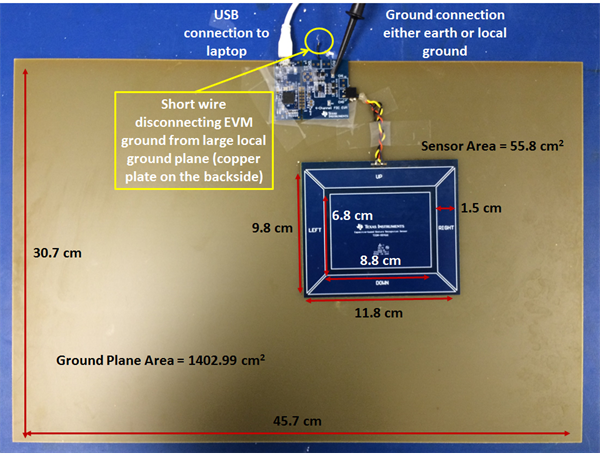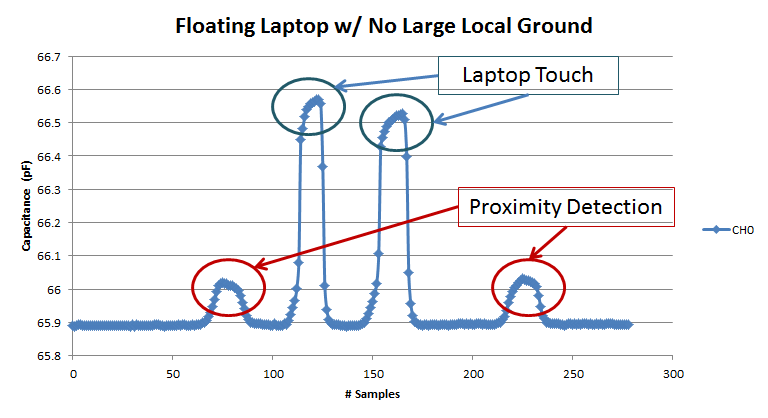SNOA952 May 2016 FDC2112 , FDC2112-Q1 , FDC2114 , FDC2114-Q1 , FDC2212 , FDC2212-Q1 , FDC2214 , FDC2214-Q1
3.2 Floating Laptop
When the EVM is connected to a battery-powered laptop, the system ground is floating at an unknown value relative to earth ground. Because the EVM is getting its ground from the laptop, the reference ground for the FDC device is also floating. When another object, such as the human body, contacts the laptop, the value of ground may shift, causing an apparent shift in the sensor capacitance and a false detection. This setup is shown in Figure 7 and is equivalent to the circuit model shown in Figure 2. The short black wire is not connecting the EVM ground to the large ground plane. Instead, the EVM ground is only connected to the floating laptop ground.
 Figure 7. The Setup of the Custom Bezel Sensor, FDC2214 EVM, and Large Local Ground Plane Which is NOT Connected to the EVM and is Left Floating
Figure 7. The Setup of the Custom Bezel Sensor, FDC2214 EVM, and Large Local Ground Plane Which is NOT Connected to the EVM and is Left Floating  Figure 8. Capacitance Measurements of the System With the Laptop Floating and No Large Local Ground
Figure 8. Capacitance Measurements of the System With the Laptop Floating and No Large Local Ground As expected from the analytical model shown in Figure 2, Figure 8 shows the ground shift phenomenon where the response to a touch of the laptop is much greater than the response to a hand coming within 10 cm of the sensor. Even though the SNR of the proximity detection is already very good, at 16 dB, the laptop touch has an even higher SNR. The total capacitance change of the laptop touch is around 0.60 pF while the total capacitance change for the proximity detection is nearly four times less at around 0.15 pF. These false detections cannot be compensated for in software because the signal signatures are not differentiable.